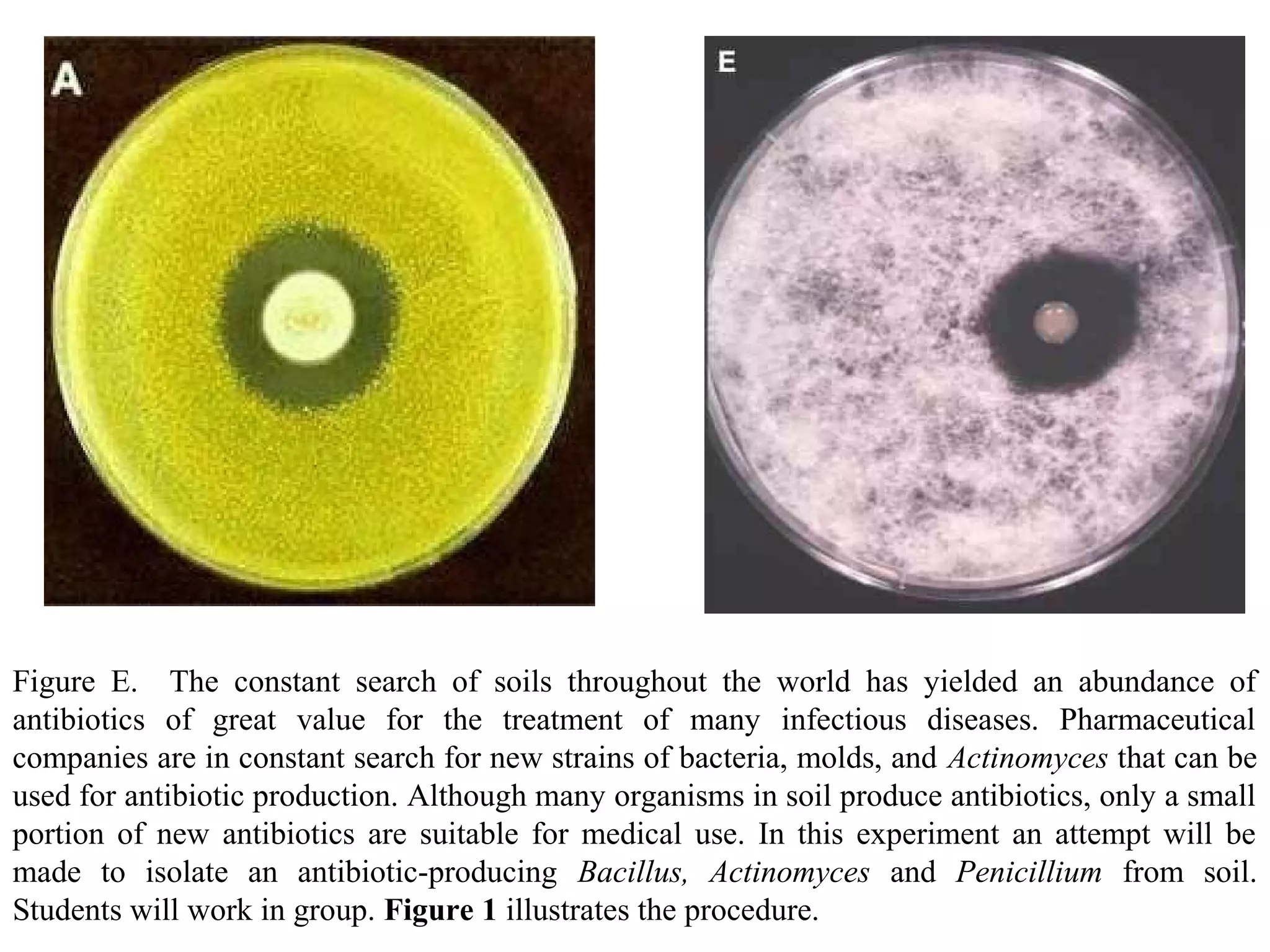The document outlines steps to isolate antibiotic-producing microorganisms from soil samples and determine their antimicrobial activity. Students will isolate Bacillus, Penicillium, and Actinomyces colonies on agar plates. Colonies will be streaked on plates seeded with Staphylococcus epidermidis or fungi to check for evidence of antibiosis. Colonies showing inhibition will be re-streaked with test pathogens to confirm antimicrobial activity through zone of inhibition assays. The goal is to isolate microbes producing antibiotics that could have clinical significance.
















